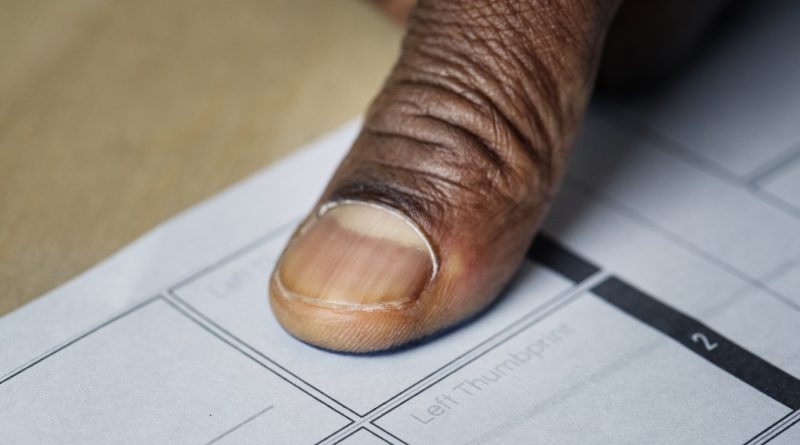Biometric Signatures and Document Management Systems
Biometric document signatures can improve simplicity, consistency and security in document management. Through biometric cloud solutions, it is easy to integrate these signing methods today, as well.
Users are already familiar with the convenience of biometrics thanks to technologies like fingerprint readers and facial recognition. Businesses can resolve some key documentation challenges by applying these easy biometric authentication methods to document management.
Challenges Facing Document Management
Digital signatures like biometric signing methods can be transformative for document management. There are several challenges professionals often face when trying to store, organize and track forms effectively. Digital signatures are a great solution to many of these problems.
Consistency and traceability are among the most common issues in document management. The way people fill out and return forms can vary significantly. Even if everyone uses the same digital document as a starting point, the final document can look and behave differently depending on the device someone uses.
In a remote work environment, formatting and process inconsistencies are more difficult to iron out. Even the simple act of forgetting to add a signature at the end of a document can be very time consuming. An employee may have to print a new copy of the paper, sign it, scan it and then send it back.
With documents going back and forth repeatedly or inconsistently, traceability becomes much more difficult. An electronic document management system can provide the structure to organize everything. However, even when documents are sorted clearly, digital documentation still faces a major challenge — security.
The cost of cybercrime rose over 900% worldwide from 2018 to 2022. Any digital system can create vulnerabilities for increasingly expensive cyber attacks. So, document management systems and digital signing methods need safeguards against fraud and hacking.
Digital signatures have many benefits, but conventional signing methods are vulnerable to poor cybersecurity. Anyone could effortlessly forge a typed signature. Even a digital handwritten signature can be copied and pasted without actual authorization from the signee.
Confirming signature legitimacy is particularly important when it comes to auditing and compliance. A business’s e-signature methods must have some kind of verification safeguard to minimize the risk of forgery as much as possible. Biometric digital signatures could be the perfect solution to this issue.
Are Biometric Digital Signatures the Key?
Biometric document signatures can come in many forms, from fingerprints to AI facial or voice recognition. These signature forms have many benefits that can help resolve some of the challenges in document management. However, there is also one substantial drawback to consider.
Benefits of Biometric Digital Signatures
Biometric document signatures are convenient, consistent, easily traceable and secure. The simplicity of biometric authentication methods makes them popular in consumer devices like smartphones and laptops. All a user has to do is tap a finger or look at their camera to gain access to their device or account.
This is much easier for most users than remembering a password. In fact, biometric authentication is more secure than a typical password today. Using readily available hacking tools, criminals can guess an estimated 73% of common passwords in less than a second.
Biometrics bring a greater level of identity verification to passwords and signatures. It is easy to forge someone’s typed signature but much more difficult to get a fingerprint or retina scan.
The high confidence level that a biometric signature is legitimate also simplifies document tracing and compliance. Everyone’s biometric signature is unique and the signee must be present to sign biometrically.
The convenience of biometric signatures extends to document management, as well. Adding support for biometric signatures to a DMS might seem complicated, but this is often not the case today. Leading DMS platforms can support hundreds of integrations with third-party apps and APIs, including biometric signature tools.
The Risk of Deepfakes
A deepfake is content that appears to be created by a real person but is actually fraudulent. Some deepfakes are harmless, such as CGI recreations of late actors or the digital deaging seen in many films today. In the wrong hands, though, deepfakes can trick biometric authentication methods and fool users.
For example, a video of Ukrainian president Volodymyr Zelensky made headlines in 2022 when viewers discovered it was actually a deepfake. The video appears to show Zelensky giving a speech in which he tells his troops to stand down in the Ukrainian war against Russia. Iit could be extremely difficult for the average viewer to know that this video isn’t real.
While the risk of deepfakes is very serious, it does not necessarily diminish the security of biometric signatures. Creating a convincing deepfake requires hundreds or thousands of hours of video and audio footage for training an AI. As a result, people who share content online frequently or appear in video footage often are at a much higher risk of deepfake attacks.
Benefits of Biometric Cloud Solutions
Integrating biometric signature tools into a document management system can greatly improve signature consistency and document security. Biometric cloud solutions are often the best way of completing that integration today.
Cloud-based DMS platforms and tools have the benefit of minimizing device-based data storage and computing power needs. By using a biometric cloud solution, businesses can reduce the amount of biometric data they store on-premises. Keeping this data in the cloud will save space and provide stronger security.
With a reputable cloud storage provider, businesses can gain more robust cybersecurity and network monitoring than on-premises data storage. Cloud-based platforms also benefit from greater resiliency since they can be stored across various data centers.
Innovating With Biometric Document Signatures
Document management systems are fantastic tools for organizing and tracking documents, but signatures can still pose a challenge. Biometrics provide greater consistency and reliability compared to other digital signature forms, such as typed signatures.
While fraudulent biometrics may be a concern, the average person’s risk of deepfake attacks remains low. Adopting biometric signature options can simplify document signing, identity verification and signature consistency.















